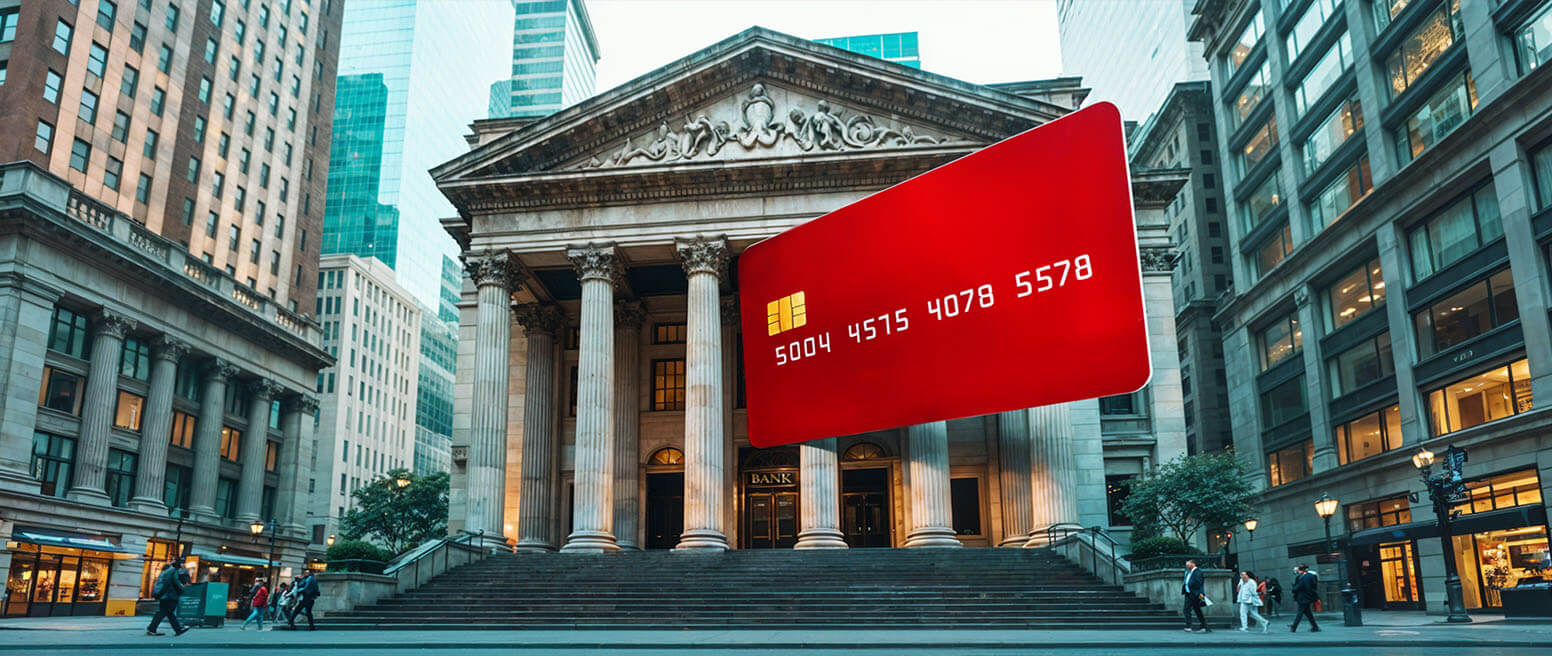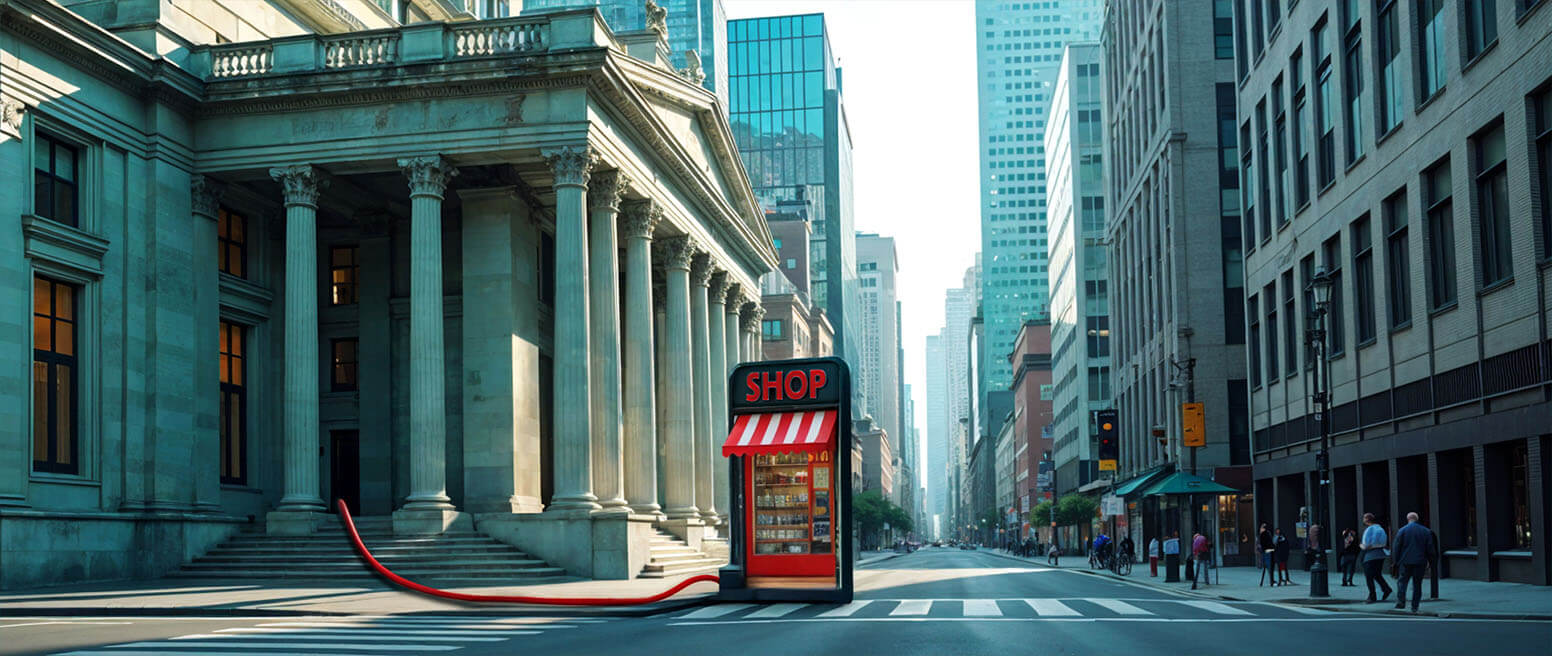Interchange Fees Explained: Who Sets the Rate & How Do They Determine It?
Interchange fees — sometimes informally called “swipe fees” — are a cost that you pay for the privilege of accepting credit card payments.
Interchange rates get set and managed by card networks like Visa and Mastercard for maintaining the network used to conduct payments. Issuing banks are the ones that actually collect the fees, though.
In theory, the fees exist to cover a service provided to you. However, some sellers think interchange fees are unfair, or are at least too exorbitant relative to the service provided. And, as costs keep rising over time, we’re seeing increased tensions throughout the financial ecosystem.
Recommended reading
- Merchant Identification Numbers | How Do MIDs Work?
- Why is My Bank Account is Under Investigation?
- Issuer Declines: 7 Reasons They Happen & How to Fix Them
- What is an Issuing Bank? The Issuer's Role in Payments
- What is an Acquiring Bank? The Acquirer's Role in Payments
- How Debit Payment Processing Works: Costs, Rules, & More
What are Interchange Fees?
- Interchange Fee
An interchange fee is a fee assessed by card-issuing banks and paid by merchants who accept credit card or debit card payments. This per-transaction fee covers the costs associated with processing payment card transactions using the card network’s payment infrastructure.
[noun]/in • (t)ər • CHānj • fē/
eCommerce merchants rely almost entirely on their ability to accept customer payment cards. That comes with a few drawbacks, though. Each credit card transaction is accompanied by fees payable to different entities involved in the payment chain. The responsibility for covering these costs will fall mainly to you.
For every card transaction, you have to remit 1-3% of the purchase price (on average) to the bank that issued the card. The is is what we call the “interchange reimbursement fee,” or more commonly, just the “interchange fee.”
The acquirer pays the fee to the issuer first, then turns around and bills you to recoup the amount paid. The issuer keeps a portion, which they may choose to pass to the cardholder through rewards (points, frequent flier miles, or cash back). The remainder (called the “assessment fee”) goes to the card network to cover the cost of maintaining their payment infrastructure.
To illustrate how this works, let’s say you have a customer that uses a Chase Visa card to pay for an order. The interchange fee would go to Chase Bank, and the assessment fee would go to Visa.
Factors that Influence Interchange Fees
The card processing method, data associated with the transaction, MCC, card brand, card type, card owner, and whether or not the transaction is tokenized can all affect interchange pricing.
Each card network sets its own interchange rates. These are traditionally updated twice a year (April and October). Detailed information regarding the current interchange rates and fees for Visa and Mastercard are available online.
Interchange fees are usually calculated as a percentage of the sale, plus a fixed fee. For example, 1.8% + $0.10. This ensures the relevant parties receive the optimal payment, even if the original transaction was for a high or low dollar amount.
I can’t tell you the exact interchange rate you’ll pay, though. This is because the formula used to set the interchange cost will vary on a per-transaction basis. It’ll depend on a lot of different factors, including:
The process of categorizing a transaction to determine the applicable rate is called “interchange qualification.”
How Interchange Fees Are Calculated: Fee Scales
Payment processors who use a flat-rate or tired pricing model will bundle interchange fees with other processing costs. Processors who use a pass-through fee structure via interchange-plus or subscription pricing models will split processing costs into interchange fees and markup costs. Blended rates may be a good fit for merchants interested in predictable pricing, while pass-through fee structures may benefit large merchants with high-volume processing needs.
Like I said before, card networks set the fee schedules. These schedules are then passed on to processors, who refer to these charges as their “wholesale rate.”
The cost is then passed on to you — plus the processor’s markup — as the final processing fee that you pay to conduct a transaction. Processors generally break these fees down via two approaches:
Bundled rates are often discounted, but bundles aren’t designed for transparent reporting and analytics. This can be problematic since payment processors often combine interchange fee and their markup with all the other fees paid to banks, gateways, and anyone else in the payment chain.
Lumping all the fees together into one single payment may seem convenient. However, it means you lose the ability to evaluate optimization efforts and determine the real cost of a transaction.
How You Pay Interchange Fees: Interchange-Plus, Flat-Rate, Tiered, & Subscription Pricing
So, how do you end up paying those interchange fees? Well, we can break down interchange pricing options as follows:
Interchange-Plus Pricing
This pricing method includes the interchange rate, plus a markup assessed by the processor, which can either be fixed or percentage-based. This markup then offsets the costs that would otherwise be incurred by you for processing services.
Pro:
This method can be less costly than the others, especially for businesses that process many transactions.
Con:
Interchange rates can vary from transaction to transaction, making it challenging to predict monthly costs.
Flat-Rate Pricing
This pricing method ensures a single rate for all transactions through a given method, regardless of interchange rates and fees. This would mean you pay a set percentage on top of the transaction rate; for example, 3% of the transaction total, plus $0.25 for every transaction.
Pro:
Flat rates aren’t subject to fluctuation. You know what you’re getting into.
Con:
It could be more expensive than the other tiers if a company processes many transactions annually.
Tiered Pricing
This pricing method combines interchange-plus and flat-rate pricing by sorting rates into categories. To illustrate, let’s say that you might pay 2% + $0.15 for debit transactions, and 3% + $0.10 for credit card transactions. These rates and fees are variable, following a predetermined ruleset.
Pro:
Tiered pricing offers predictability combined with competitive pricing.
Con:
If you are a high-risk merchant, or process a large number of payments overall, the costs associated with a tiered pricing scale could be very high.
Subscription Pricing
Also called membership pricing. This method is similar to interchange-plus because it separates the markup from the interchange. However, the difference is that your processor will charge you a monthly subscription fee instead of tacking on fees per transaction.
Pro:
Cost-effective for enterprise-level businesses.
Con:
Expensive monthly subscription fee.
Which Pricing Model Offers the Best Rates for Merchants?
Which pricing model is best? In short: it depends.
One of the main factors to consider is the scale of your business. A pricing model which works for a small business may not be cost efficient for enterprise businesses. Also, depending on industry and vertical, you may be limited to working with payment processors that specialize in high-risk accounts, with limited fee scaling.
Interchange Scale Overview
| Pricing Scale | Interchange Fees | Approach | Best For |
| Interchange-Plus | Separate from markup | Pass-through | General business |
| Subscription | Separate from markup | Pass-through | High volume business |
| Tiered | Blended with markup | Blended | *Inadvisable |
| Flat-Rate | Blended with markup | Blended | Low volume business |
I get that this is still really confusing. But, to try and make this a little easier, I can give you an idea of what a typical processing rate plans will look like for an average merchant, using each of these pricing models:
| Interchange Example | Pricing Model | Wholesale Disclosure |
| INT + 0.15% + $0.10 | Interchange-Plus | N/A |
| INT + $0.15 + $99/Month (Subscription) | Subscription | N/A |
| Qualified: 1.50% + $0.15 (Mid-Qualified: 2.00% + $0.15) (Non-Qualified: 3.00% + $0.20) | Tiered | Included |
| In-Person: 2.25% + $0.10 Online: 2.75% + $0.35 | Flat-Rate | Included |
Keep in mind that these are very broad examples of possible interchange rates. Actual interchange rates vary between networks and issuers.
Interchange rates are indirectly related to chargeback costs. If you get hit with a chargeback, you lose the interchange paid for the initial transaction. Plus, if you receive too many chargebacks, they may push you into the “high risk” category. You could end up paying a significantly higher interchange rate as a result.
What are the Current Interchange Rates?
So, here's the big question: what exactly should you expect to pay in terms of interchange rates?
Again, each card network sets their own rate. But, I can still give you a basic rundown on ballpark expectations for both Visa and Mastercard transaction costs.
Visa Interchange Rates
Visa’s interchange rates apply to all US-based merchant transactions. However, there are separate interchange rates that apply to transactions conducted on a US-issued card at a US-based merchant, and interregional interchange rates. There could be a different fee schedule for interchange rates applied to transactions conducted on a non-US-issued card.
View the Visa Interchange Fee ScheduleMastercard Interchange Rates
Like with Visa, the Mastercard interchange rates apply to all US-based merchant transactions. However, there are separate interchange rates that may apply regarding US-based merchants and interregional transactions. And, as with Visa transactions, you won't pay interchange reimbursement fees directly. Instead, you'll typically negotiate and pay a rate to your acquirer that is calculated as a percentage per transaction (called the “merchant discount”).
View the Mastercard Interchange Fee ScheduleIf you aren’t sure what your processor charges, you can visit their website or take a peek at your statement to view your interchange rates.
How Businesses Can Reduce Their Processing Costs
Every dollar you save on interchange and other card acceptance fees is a dollar added to your bottom line. So what can you do to maximize your cut? Here are some strategies:
Minimize Fraud Risks Aggressively
Card networks determine interchange fees in part based on how risky they are. The more fraud-prone a transaction is, the higher its costs.
Interchange pricing for card-not-present transactions will almost always be higher than for card-present ones. But, you can implement tokenization, deploy address verification services (AVS) at checkout, and use other eCommerce fraud prevention tools to show payment processors and card networks that you’re proactive about lowering fraud risks. You should also encrypt transactions, settle transactions daily, provide Level II or Level III data for processing, and follow other payment processing best practices.
Shop Around For Payment Processors
As we mentioned before, payment processor fee structures vary widely. You may be able to shave off tens or even hundreds of basis points off your transaction costs by simply switching providers.
Shop around when you can. And, make sure to negotiate pricing with providers before you sign a contract. Securing processing is like any other business transaction; don’t settle for the first figure that’s offered.
Be Informed About Interchange Fee Changes
Card networks adjust their interchange fees twice per year, once in April and again in October. Be on the lookout for these changes, and see if you can observe trends over time.
You’ll probably notice that not all interchange rates change equally. Rates for certain transaction types may even decrease, so see if you can capture fee cuts by structuring your transactions differently.
Interchange fees are always subject to change. Visa and Mastercard increased interchange fees significantly post-pandemic, especially for card-not-present (CNP) transactions. Non-tokenized CNP transactions, which come with significant fraud risks, experienced the most significant interchange fee increases. Interchange fees for tokenized CNP transactions and card-present payments, both of which are less fraud-prone, either remained the same or fell.
Look, here’s the bottom line: you have to take credit and debit card payments if you’re going to succeed. That means you need to accept interchange fees as a cost of doing business. However, it doesn’t mean that you have no options.
Unsure where to start? A detailed data analysis can provide clues for optimizing fee rates.
The experts at Chargebacks911® can identify areas of your business that may be leaking revenue and demonstrate ways to maximize your ROI. Want to learn more? Click below and get started.
FAQs
What is an interchange fee?
Interchange fees are assessed by card networks and paid by merchants who accept credit card or debit card payments. This per-transaction fee covers the costs associated with processing payment card transactions.
Who pays an interchange fee?
The merchant is responsible for paying the interchange for a transaction. Interchange fees generally account for the majority of overall processing costs per transaction, aside from network assessment fees, which are payable to the applicable card network.
Why do banks assess interchange fees?
Interchange fees account for processing costs per credit or debit card transaction. Fees are set and assessed by card networks, then paid to issuers via your payment processor, sans a processing markup.
How much is an interchange fee?
Interchange fees vary among card brands. To illustrate, the average interchange rate for Visa card transactions is somewhere between 1.3% and 2.6%. For Mastercard, the average interchange is between 1.45% to 2.9%.
Who sets your interchange fee?
Banks and card networks set the fee schedules that are then passed on to processors. Processors refer to these charges as their “wholesale rate,” which is then passed on to the merchant, as an interchange fee.
How do processors calculate your interchange fee?
Processors break down their interchange rates into two approaches: blended and pass-through. They further delineate their fees into four main pricing scales: interchange-plus, flat-rate, tiered, or subscription.














